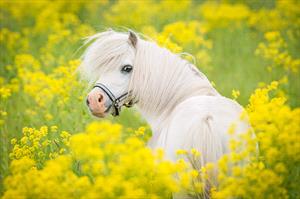Bob Judd, DVM, DABVP (Equine Medicine), DABVP (Canine and Feline Practice)
white pony.jpg

If you have horses, you have heard about laminitis but may not know if your horse is susceptible. Insulin-related laminitis is the most common cause of laminitis and is due to increased levels of insulin, usually due to your horse’s diet and body condition.
Laminitis is a painful foot condition, and a large portion of treatment and prevention is related to the horse’s diet. Horses with hyperinsulinemia-related laminitis have high levels of insulin in the blood and carry excessive fat tissue.
Prof. Simon Bailey, BVMS, DipECVPT Ph.D., FRCVS, says in the publication The Horse that these abnormalities are known as equine metabolic syndrome, and hyperinsulinemia-related laminitis is part of this syndrome. Hyperinsulinemia means there is a higher level of insulin in your horse’s blood than is healthy.
There are several factors that make your horse susceptible to this type of laminitis, including genetics. Some horses are more susceptible depending on their breeding. Ponies and overweight horses are more likely to develop laminitis than other horses.
Obesity may be due to feeding too much feed, but in many cases, obesity is due to insulin resistance, and once a horse is overweight, obesity further increases insulin resistance.
If your horse is overweight or only has fat pockets in certain areas, they are susceptible to developing laminitis.
One study showed that 50% of the light-breed horses in the United States were obese. There is a clear association between insulin dysregulation (this means an abnormal regulation of a metabolic process) and pony breeds, Spanish and gaited horse breeds, miniature horses, and warmbloods.
Some of the horse breeds studied are more metabolically efficient than others. Evolution could play a role as the ancestors of these breeds adapted to a harsh environment coming out of Western Europe after the last ice age. This is why these breeds cannot adapt to the lush pastures and the high carbohydrate feeds of today.